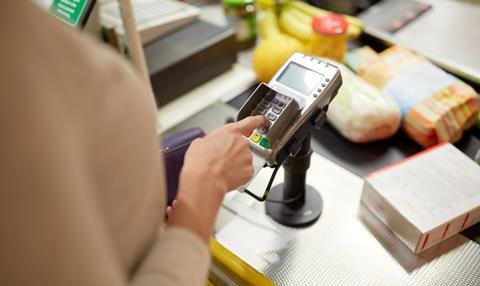Spending on promotions has gone up for the first time in two years, now accounting for just over a quarter of the total market at 25.2%, according to Kantar's latest research. Grocery price inflation has fallen to 14.9% in the four weeks to 9th July 2023.

Grocery price inflation has seen its steepest decline since inflation peaked in March this year, whilst grocery sales over the same period grew by 10.4% compared with 12 months ago.
Fraser McKevitt, head of retail and consumer insight at Kantar, explained: "One of the biggest shifts we’ve seen […] is retailers ramping up loyalty card deals like Tesco’s Clubcard Prices and Sainsbury’s Nectar Prices. This could signal a change in focus by the grocers who had been concentrating their efforts on everyday low pricing, particularly by offering more value own-label lines."
McKevitt added: “The boost to promotional spending has contributed to bringing inflation down but this isn’t all that’s driving the change. Prices were rising quickly last summer so this latest slowdown is partially down to current figures being compared with those higher rates one year ago.”
Competition for market share among Britain’s three largest retailers remains intense, said Kantar. Sainsbury’s sales growth edged ahead this month, marking the first time since January this year it has led Asda and Tesco. It grew by 10.7%, maintaining its share of the market for the third consecutive month and is now at 14.9%.
This was just ahead of Asda and Tesco, which increased sales by 10.5% and 10.2%, giving them market shares of 13.6% and 27% respectively.
Aldi was again the fastest growing grocer, with sales up by 24%. Lidl also increased its market share, up by 0.7 percentage points to 7.7%. Morrisons saw growth of 2.5%, its best showing since April 2021.
Both Waitrose and Co-op grew by 5.1% over the 12 weeks, the largest boost both retailers have experienced since March 2021. Iceland maintained a 2.3% share of the market after growing sales by 8.9%. Ocado’s sales rose by 2%, taking an overall market share of 1.7%, aided by its much larger 3% share in London.
Barbecue favourites see strong sales but grocer footfall slows
June saw temperatures soar and consumers took the chance to light up the barbecue. Fraser McKevitt continued: “It now seems like a distant memory, but this June was the hottest on record. Plenty of us grabbed the chance to enjoy some outdoor dining with volume sales of barbecue classics like chilled burgers rising by 7% and chilled dips by 5%."
At the current level of inflation, households would have spent £683 more on their annual grocery bill to buy the same items as they did a year previously. However, consumers have adapted their habits to limit this increase, as Fraser McKevitt explained: “It’s clear that shoppers have dramatically changed their behaviour to combat inflation, whether by trading down to cheaper products or visiting different grocers. The average annual increase to household spending over the past 12 months has actually been £330 – well below the hypothetical £683.
“It also seems the trend towards bigger shops has stuck. We’re visiting the supermarkets less often than we did before the pandemic and buying more when we’re there. Compared to last year, trips to the store have only gone up by 1%. At that rate of change it would take until 2028 for us to get back to 2019 levels."
McKevitt argued that while some people may be shopping less often to manage spending, a slowing in the rate of footfall is also linked to more people working from home. This has led to fewer opportunities to pop into the shop on the way to or from work.
This story was originally published on a previous version of the Meat Management website and so there may be some missing images and formatting issues.















